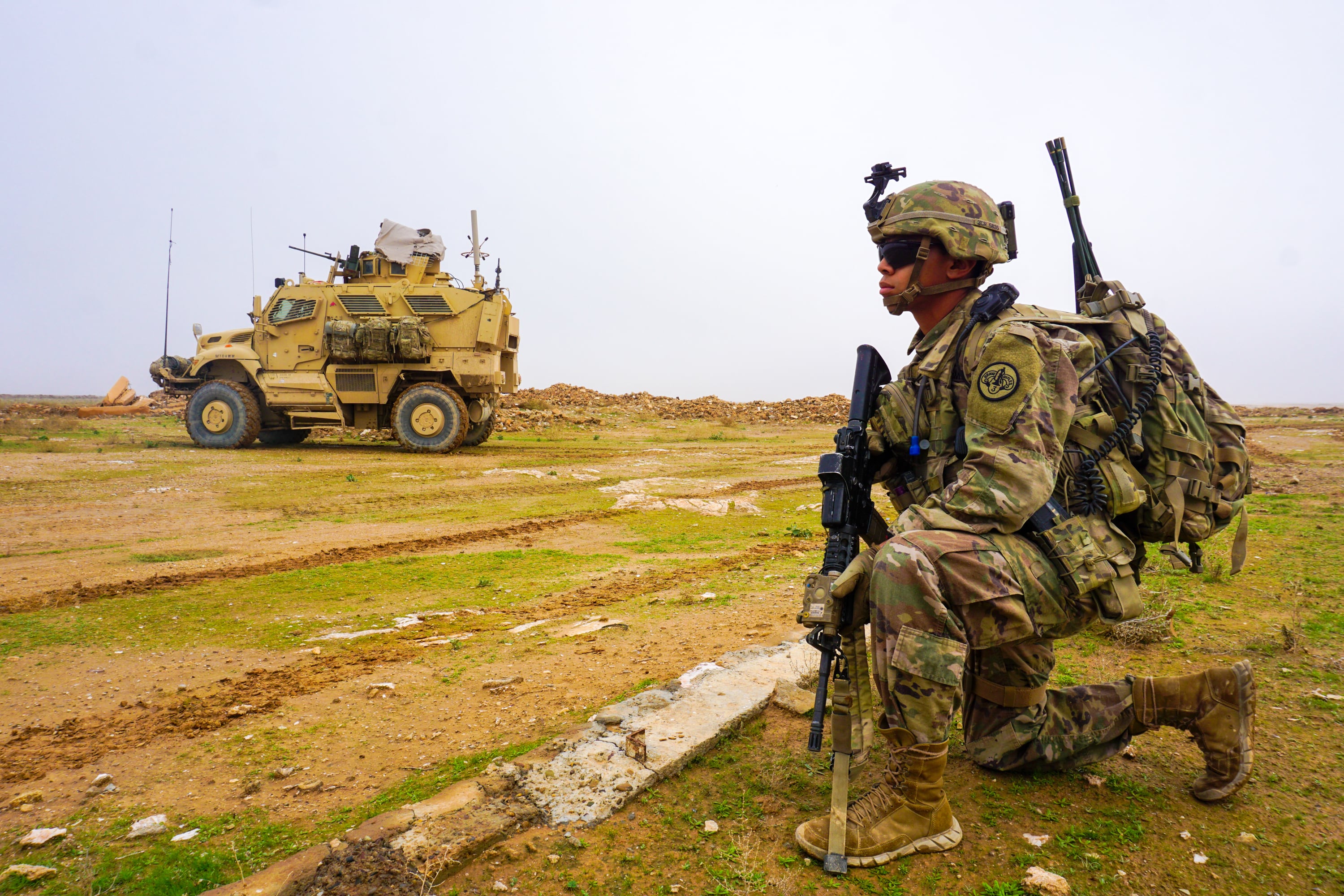The final push against the Islamic State’s last camp was launched Friday evening in Syria, and continued through the weekend.
The U.S.-backed Syrian Democratic Forces launched its attack against the last ISIS encampment after evacuating civilians and some of their own forces who were being held hostage, according to an SDF press release.
By Sunday, the assault had slowed down amid allegations of ISIS utilizing human shields.
“We’re slowing down the offensive in Baghouz due to a small number of civilians held as human shields by Daesh,” SDF spokesman Mustafa Bali said, using an Arabic acronym for ISIS. “However, we assert that the battle to retake the last ISIS holdout is going to be over soon.”
SDF troops began the final assault by advancing on two fronts against the ISIS encampment in Baghouz, Deir ez Zor province. The camp is set on the east side of the Euphrates River, which separates the U.S.-led coalition in Syria’s east from the Bashar al Assad government and Russian forces in the west.
U.S. officials wouldn’t go into detail regarding the ongoing battle.
“The fight is conditions-based with no timeline,” U.S. Army Col. Sean Ryan, a spokesman for the international coalition, said in an email.
Clashes took place throughout the weekend, as ISIS used heavy weapons, small arms, mortars and vehicle-borne improvised explosive devices to hold onto their last bit of land, the SDF said.
Local allies on the ground are being backed by coalition air power and advisers throughout the assault.
“Several car bombs were destroyed by coalition airstrikes during the last two days of battle here in Baghouz,” Bali said. “[Three] VBIEDS that were trying to hit our positions were destroyed by SDF fighters.”
The large fires billowing from the camp were likely caused by the clustered ammunition dumps and vehicles that caught fire from the intense barrage of airstrikes and ground weapons.
Allegations were also made over social media that white phosphorus-loaded munitions had been used on the ISIS encampment, starting the fires.
“Totally false,” Col. Ryan, the U.S. spokesman, said. “Airstrikes hit two ISIS ammo depots.”
RELATED

White phosphorus is commonly used to mask troop movements and mark targets, but it can also act as an incendiary weapon that bursts on impact, mixing chemicals with the outside air and burning those in proximity to the explosion.
“The use of such white phosphorous weapons against any military objective within concentrations of civilians is prohibited unless the military objective is clearly separated from the civilians,” Peter Herby, former head of the International Committee of the Red Cross’ Arms Unit, said in a 2009 interview.
The SDF said Monday that 164 ISIS fighters have been killed in the fighting, which involved 65 coalition airstrikes.
Four SDF troops have been killed and another 38 were wounded, SDF press officials added.
The Syrian Observatory for Human Rights also said Monday that roughly 150 ISIS fighters surrendered. It is unknown how many ISIS fighters are contained within the final encampment, which was only a few square kilometers in size.
ISIS has also been known to use tunnel networks and the group has had time to dig into the Baghouz encampment. Although the camp represents the last territory nominally owned by ISIS, the group still maintains a presence in Syria and even Iraq, according to bi-weekly strike releases provided by the U.S. military.
The U.S.-led coalition conducted 186 air and artillery strikes between Feb. 10-23 in Syria.
The coalition reported that their strikes in Syria destroyed 189 fighting positions, 50 supply routes, 22 staging areas, 16 boats and 15 vehicles, two buildings, two tunnels and one cave, among other targets.
In Iraq, the coalition said it conducted 25 strikes against 19 ISIS tactical units, and destroyed 18 tunnels and caves used by the militant group.
Kyle Rempfer was an editor and reporter who has covered combat operations, criminal cases, foreign military assistance and training accidents. Before entering journalism, Kyle served in U.S. Air Force Special Tactics and deployed in 2014 to Paktika Province, Afghanistan, and Baghdad, Iraq.





